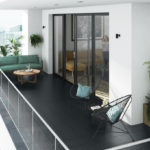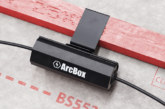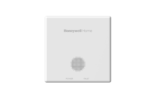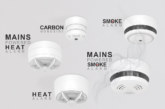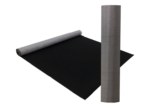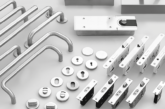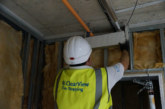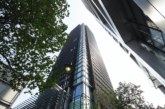Ecodek’s Technical Manager, Michael Roberts, explores if there’s a need to chase the A1 fire classification for Polyester Powder Coating – and whether the very highest safety rating is achievable at all.
BS EN 13501-1 provides the fire classification procedure for all construction products, which includes products incorporated within building elements. These products are separated into three categories:
- Construction products (which excludes floorings and linear pipe thermal insulation products)
- Floorings
- Linear pipe thermal insulation products
To classify in accordance with BS EN 13501-1, dependent on the product and area of application, a combination of tests is required to determine a product’s classification.
Combustible classifications
The classification is split into three parts: main, smoke, and the flaming droplet classification.
The main part of the classification is its letter – A1, A2, B, C, D, E and F – with A1 being the highest level of performance and F the lowest. Products that are classified in the A1 and A2 classes are non-combustible materials, whilst those classified from B to F are combustible materials in ascending order.
Following the Grenfell disaster, contractors are now exclusively using A1 and A2 classified products on both new and retrofit projects – with a preference for those products having achieved the A1 standard. As such, industries supplying these contractors are scrambling to produce products that meet these exacting classification standards. However, when it comes to paint finishes on metal work, are these standards really achievable?
The A1 obsession
“The current constant need to improve on fire classifications has led some companies to uncompromisingly chase the A1 classification of non-combustible paint finishes on metal work. The current building regulations state that materials must be a minimum of A2, yet there is an obsession with improving on that even further to gain market advantage. But is it worth it?
“There is absolutely no doubt that the development of material technology to prevent any further incidents of fire spread on buildings – above or below 18m – is a must, but have we reached the limits of what is possible with a powder coating paint finish, for now at least?
Setting standards
For specifiers and powder coaters of architectural aluminium, the recognised European Standard is BS EN 12206, which defines the weight that the coating should be applied to a significant painted surface. This standard goes hand-in-hand with Qualicoat, the internationally recognised specification for the production of high-quality coatings on aluminium products specifically for architectural applications.
Qualicoat has established a set of specifications to produce powder coated finishes on aluminium, which define the minimum production requirements for plant and equipment, coating materials and finished products. The aim of the Qualicoat specification is to ensure a high-quality of coated products for use in architectural applications and all the requirements in the Qualicoat specification must be met before a manufacturer can be granted a quality label.
However, these specifications also determine whether your end product can be classified as A1.
Talking thickness
According to AkzoNobel, a leading coating supplier, if you are applying a polyester powder coating to a non-combustible metal such as aluminium, to Qualicoat certified standards, then it cannot be above 25µm(microns) thick if you are claiming it achieves A1. Qualicoat states that to meet its Class 1 to 2 coating specification the minimum coating thickness should be 60µm and to meet Class 3 is a minimum of 50µm – so reaching A1 is unachievable using their certified coating system.
One way of attaining the A1 specification is to alter the ratio of coating fillers and binders within the powder coating. However, when you start altering the mix you will ultimately compromise the quality of the finished coating, which can result in colour fade, chalking and the need to replace or re-coat within a few years. Any alteration in the powder coating ingredient specification will undoubtedly be frowned upon by Qualicoat and can lead to the coating applicator losing their license to be able to use the Qualicoat logo.
Naveen Sandhu, Specification Manager at AzkoNobel, agrees: “The fixation with achieving A1 rating needs to be addressed. This is often desired based on the headline number and reduction in ‘perceived’ risk. Decisions are often made without full understanding of how A2,s1-d0 systems actually perform. Various large scale through-the-wall tests have consistently proven there is no differentiation in fire performance (spread, smoke production, flaming debris etc) between A1 and A2,s1-d0 classified systems. Ultimately, as with any compliant system, if it’s specified, configured and installed correctly, you have safe cladding. There is reason why both classifications are permissible under Part B.”
Educating the industry
Manufacturers are currently obsessed with achieving A1 status, whilst contractors believe only products achieving such standards are fit for purpose. In a recent article HMG Powder Coatings stated:
‘The reaction to fire of a material is categorised according to EN 13501-1, and only those achieving Class A1, or Class A2-s1,d0 are considered suitable cladding materials for relevant buildings (including student accommodation, care homes, hospitals, and residential apartments) above 18m. Because of practical limitations in the use of powder coatings, most particularly the requirement for a minimum dry film thickness for architectural powder coatings above 60 microns, Class A1 almost certainly cannot be achieved, leaving the highest fire rating for a coating is Class A2-s1, d0.’
And this is the problem we have – a lack of understanding about the difference between the A1 and A2 classifications. We produce a product which has a coating combustibility classification of A2fl-s1 under EN 13501-1 2018. It is also certified as Qualicoat 1 standard, meaning that the coating will be of consistently high quality and has been rigorously sampled and tested during the product process for its appearance, consistency, adhesion and reaction to weathering and pollutants. Amending this coating in any way to chase the A1 certification, will not increase the non-combustible properties of the product, but will result in a poorer quality item that will most likely have an invalid warranty.
A2 classified products are not sub-standard and by better understanding the differences between the A1 and A2 ratings, those involved in the construction industries will find they have a greater choice of products, without having to compromise on safety or quality.

